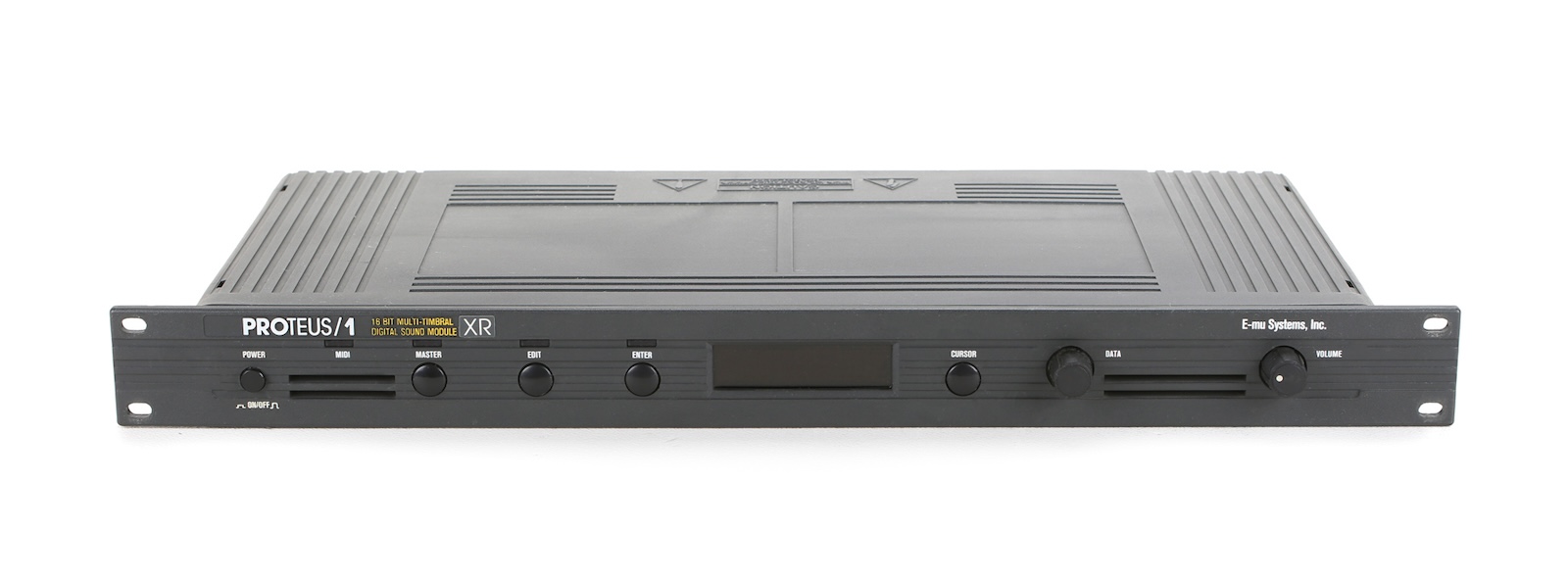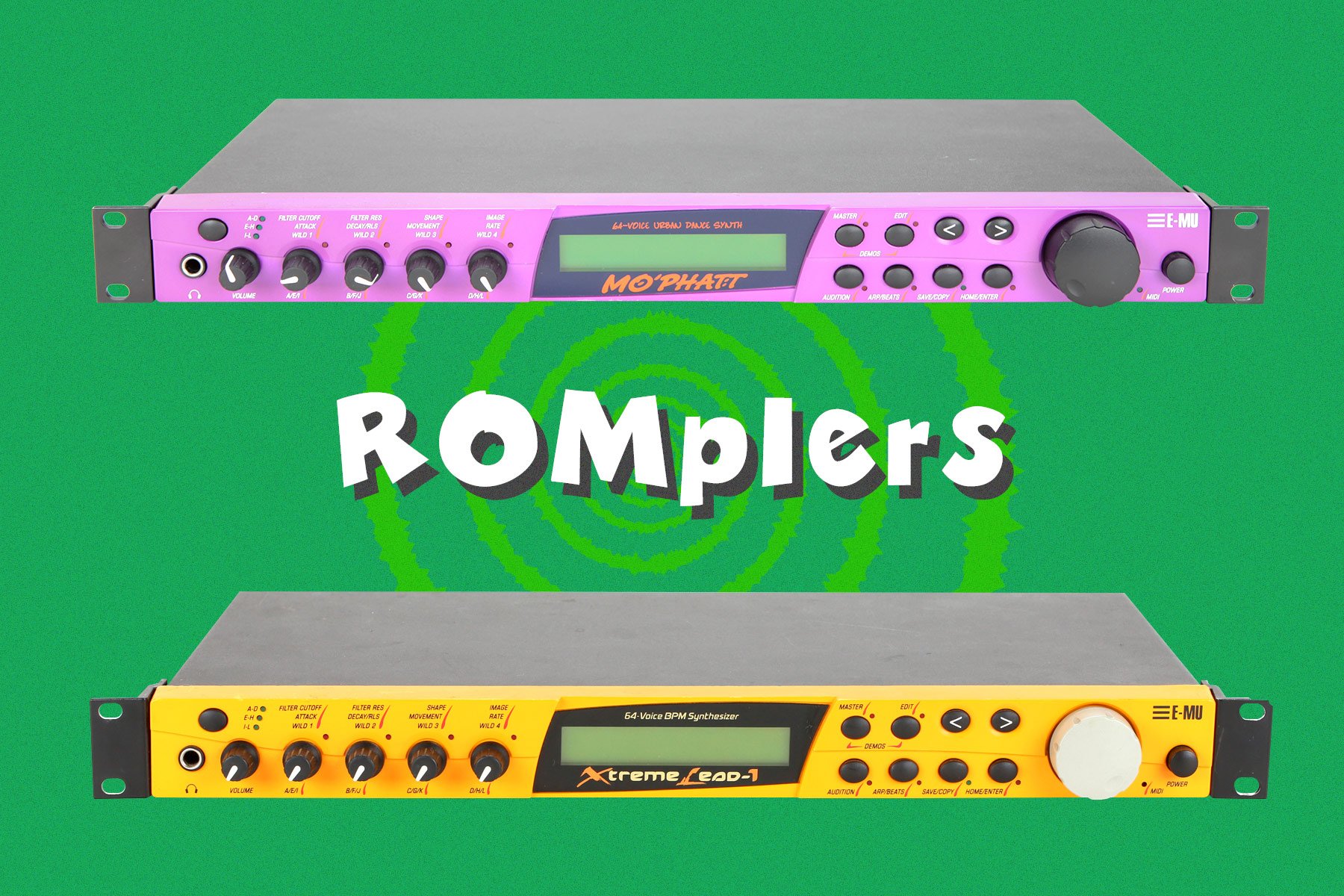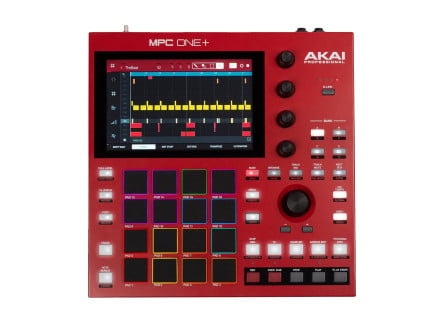There's a lot of strange information about ROMplers out there on the internet. I can see where it comes from, because the word ROMpler is simple to understand and easy to apply. You take the ROM from Read-Only Memory and push it up against the end of sampler. A ROMpler is a read-only sampler, or a sampler that doesn't sample and instead, has a load of sample library sounds preinstalled.
But it's all too easy to attribute this term to things that have nothing to do with its origins. You see, the word ROMpler did not originate as a marketing term; it was not an intentional descriptor or a category of instrument. It was, if anything, a derogatory term thrown at preset sound modules by industry nerds precisely because they offered sampler-like sound but without having the ability to sample or edit like a sampler can. How do I know this to be true? Well, I was there.
ROMplers: Where Did They Come From?
Imagine, if you will, the thriving, pulsing melee of the Turnkey Music Store in the mid 1990s nestled in the heart of London's West End. DJs were in ascendance, digital was king, musicians still believed in record companies, and software had not yet begun to glimpse its potential. The hottest products of the day were samplers. I could sell E-mu ESI-32 samplers with a ZIP drive all day. The repair department workbench had a constant flow of Akai S2000 and S3000 samplers having their RAM upgraded to something crazy like 8MB(!!), and the MPC2000 was about to empower whole new genres of music. It was an exciting and vibrant time.
If you were not into samplers, the alternative came from the direction of synthesizers. Synths didn't really know what they were in the 1990s. With a few notable exceptions, the digital revolution that gave us the Korg M1, Roland D50, and Yamaha SY77 took us away from synthesizing sound into largely preset tone machines based on digital waveforms. They often came in keyboardless Sound Modules, of which the Roland JV-1080 was probably the most dazzling. It sounded great. It was full of authentic and realistic-sounding instruments, synths, drums and percussion. Plonk a JV-1080 next to your workstation keyboard, and you have a whole universe of sounds at your disposal. And if that wasn't enough, you could expand the JV with more sounds by adding ROM Expansion Boards.
Preset Sound Modules and Samplers seem like very different approaches to music production, but in the reality of the studio, they were more similar than you'd think. While many people enjoyed sampling records and creating their own sampled instruments, many more people did not. The effort required to do the actual sampling and editing of sound was unexpectedly troublesome, and so people went in search of ready-made samples where someone had done all the hard work for you. Consequently, a huge market grew up around sampler-ready sound libraries. It turns out that people liked the sound and concept of samplers, but ultimately, most preferred the ease of use of preset sound modules.
The Evolution of the ROMpler
In the space between samplers and sound modules, something very interesting happened. E-mu was way ahead of the curve with its Proteus 1 sound module, which first came out in 1989. It was essentially a sound module derived from E-mu's history of samplers rather than the legacy of synthesizers that Roland and Korg drew upon. There were three versions, each containing 4MB ROM chips bursting at the seams with sampled sounds. The Proteus felt different from other sound modules; it wasn't pretending to be a synth, but it also wasn't a sampler. Of course, "real professionals" used real samplers, and so the Proteus perhaps didn't get the recognition it deserved at the time. It wasn't until the arrival of the E-mu Orbit in 1996 that we really understood what was going on, and needed a useful way to talk about it.

[Above: the E-mu Proteus/1 XR; image via Perfect Circuit's archives.]
I remember it well. This was before the world wide web became the source of all information, and so, as a salesperson on the shop floor of the biggest music shop in Europe, I had to be able to explain and demo every single product in the store. If someone was looking for a new source of sounds, you would inevitably end up between the E-mu and Roland racks, and it was in trying to explain the difference between the JV-1080 and any of the E-mu modules that the term ROMpler first floated across the store. The JV felt just like the sound engine of a workstation synthesizer; it had nice, professional sounds and editing that followed a familiar synthesizer architecture. The Orbit, on the other hand, blew your headphones off. It was a dance party from the first note with loops, kits, and epic synth sounds that were animated and alive. Orbit felt like a fully-loaded sampler and played like one. So, you would explain that the Orbit—like the Phatts, Carnaval, and Xtreme Lead that followed—were samplers that didn't sample. Instead, they had a curated bank of sample library ready to go. "You could call it a sort ROMpler," I can hear myself saying with a grin and a slight cringe.
It was a brilliantly valuable term that perfectly cut through the sound module haze to highlight what was different between these two approaches.
That's the origin of the ROMpler right there. It wasn't intended to be a category, but it has come to describe any instrument that's based on sample library and doesn't sample. The presence of an actual "ROM" (Read-Only-Memory) chip is irrelevant, and so is trying to reflect what is a very loose definition back in history and try to force it onto other things. Asking around in Facebook synth groups full of wizened old synth heads, the Roland U-110 comes up a lot as a potential first ROMpler. It beats the Proteus by a year and comes with a whopping 2MB of ROM-based PCM sampled sounds. It could be argued that any synth or sound module that uses samples as the basis of its sound generation is a ROMpler. That then takes in all sorts of synths that use digital waveforms, including the Korg M1 and almost everything that came after—but, to me, that's nonsense. It may be a logical extension of what you think is the definition, but it forgets that the term ROMpler isn't interested in such cerebral pontifications. It's just a load of sample libraries, in a box.
[Above: a selection of turn-of-the-century E-mu ROMplers: the Mo'Phatt, Planet Earth, and Xtreme Lead-1. Images via Perfect Circuit's archives.]
ROMplers ultimately found their calling in software instruments. Once software sampling became a thing with Nemesys Gigasampler in the late '90s—and then Native Instruments's Kontakt in 2002—we discovered that we no longer needed to feed CDs of samples into hardware samplers. Being able to stream samples directly off a hard disk led to a second explosion in sample library generation. But this time, the instruments could be built into a software interface rather than just making the sampled sounds available. You could then release a software instrument for Kontakt (or similar) that ran an entirely curated sample library; that’s the very essence of a ROMpler. We now have countless terabytes of ROMplers covering every conceivable instrument, style and genre.
Meanwhile, back in the hardware world, ROMplers are still treated with a whiff of disdain, albeit an increasingly small one. You often hear people say, "it's only a ROMpler, but..." as if its lack of sound source editing is something to be ashamed of.
However, there are some distinct advantages that ROMplers have over samplers or sound modules. The biggest is that you get all the excitement and realism of real sampled sounds without all the mucking about with constructing the samples, loops and slices yourself. Using hardware samplers was, frankly, exhausting, and while you could just load up some library on your Akai, it took much longer than having a ready-made module. The sounds are unique. They were not created through fiddling with waveforms; they were recorded or sampled from other instruments and synths. The Orbit, for instance, contained samples of a Moog Modular, ARP 2500 and 2600, TR-808 and Fairlight CMI Ilx, to name a few.
ROMplers: Where are They Now?
Back to the present, I can't think of a single piece of hardware that I'd consider a ROMpler. If you put the term in the Perfect Circuit search bar or that of any other music store, you'll come up empty. However, you could say that ROMpler-style content turns up in all sorts of hardware. If we put PCM-based sound sets aside, we can avoid the hundreds of home keyboards, arrangers and General MIDI devices that don't do the term justice. But how about the Sequential Prophet X, with its 150GB library of sampled sounds from 8DIO? Consider perhaps the Nord Stage 4 and Wave 2 with Nord's Sample Library. Or maybe the Kurzweil K2700, which is an evolution of the K2000, arguably the first ROMpler keyboard. The waters have also been muddied a bit because many of these keyboards, especially if you wander into Korg and Yamaha workstations, can sample and create their own instruments. So, while they are packed with sampled sounds, they get disqualified by being samplers. Grooveboxes like the Elektron model:samples and Novation Circuit Tracks all suffer the same fate.
So, I think it's safe to say that the ROMpler has evolved into a software phenomenon where it makes the most sense and offers the best experience. And that experience can be awesome and transcends any sense of nerdy snarkiness. If you look at the clever use of effects, the multiple articulations, and synthesizer-style modulation, many ROMplers have become entirely new instruments that go far beyond their original source material.
I loved the Orbit; it was a lot of fun and modules like it are increasingly in demand precisely because you couldn't go beyond the sample library. There are sounds from the Proteus that are regarded as classics because of their use across decades of dance, pop and R&B music. And the sounds are right there, in the presets, just like you hear them on the records.














